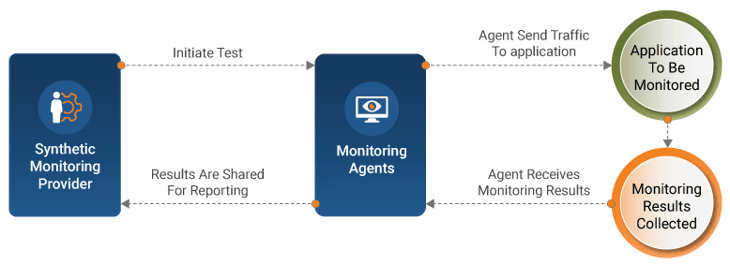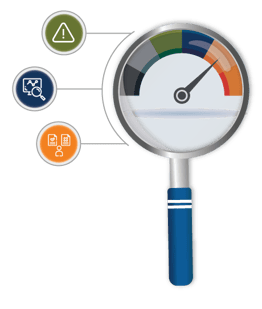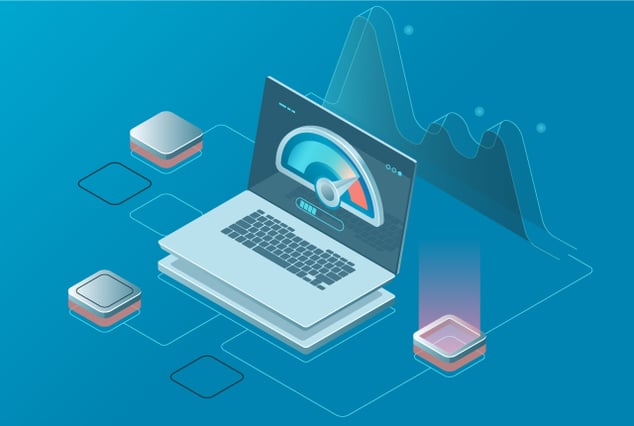Synthetic monitoring is also known as proactive monitoring, which helps in identifying performance issues with application endpoints before they negatively affect user experience. Read this QASource expert series to know more.

Synthetic monitoring is also known as proactive monitoring, which helps in identifying performance issues with application endpoints before they negatively affect user experience. Once the application has undergone an extensive performance test, the next step would be to monitor business workflows and analyze performance metrics. Waiting to get performance data generated by real users of the application, who may or may not exercise all workflows, would not be an ideal approach.
Most importantly, you cannot let the performance issue occur in real-time as the existing monitoring system observes the traffic and generates the alert for any discrepancy when it has already impacted the real users.
To overcome this problem, you need some clean, consistent, and recurring performance tests using scripted transactions simulating user behavior.
This is where synthetic monitoring comes in. It simulates the workflow or behavior a real user would perform more often and continuously monitors them to look for their functionality, availability, and response time at specified time intervals. Synthetic monitoring also fixes bottlenecks before they would actually occur in real-time.
Synthetic Monitoring Vs Real User Monitoring
Most often, synthetic and real user monitoring techniques look similar to each other. However, there are certain parameters that make them different.
Let's understand the difference between these two popular monitoring techniques.
Synthetic Monitoring |
Real User Monitoring |
|---|---|
| Performance is measured using simulated users | Performance is measured using real users |
| Provides insights into the user experience of the application | Provides insights into application behavior under heavy user load |
| Monitoring can be done in both pre-production and production environments | Monitoring is performed in production environments only |
| Provides short term trends in absence of real traffic that help in baseline and benchmarking | Provide long term trends based on aggregated user experience that helps in planning future enhancements |
| Actionable alerts are generated when a checkpoint is unreachable that helps in the early fixing of the problem | Alert generation is dependent on real user action, which may or may not access the site or checkpoint, hence alerts will be generated accordingly |
How Does Synthetic Monitoring Work?
Synthetic monitoring services actively test the application without real user load where traffic is generated manually using agents that simulates real users in a controlled environment considering different devices, geography, and networks and gathers performance data.
An extensible script is used to create activity (it can be anything like ping for availability check or any user transaction) to be monitored and the server continuously tries to connect whether the target site is reachable or not. This synthetic monitor further connects to websites, web applications and services, API, and network destinations to simulate a user's actions or path.
Below are workflows that clearly explain the actions involved in synthetic performance monitoring:

Benefits of Synthetic Monitoring
While synthetic monitoring tracks your application performance and availability, one can also leverage the below-mentioned benefits:
What Can You Monitor Using Synthetic Monitoring Tools?
Synthetic performance monitoring is supposed to check availability, web performance, and transaction monitoring. This can be easily achieved using a variety of tools that help to easily perform synthetic monitoring as per business needs.
Several APM tools like New Relic, AppDynamics, and Dynatrace provide in-built synthetic monitoring features that can be configured as per your testing requirements. Some of the commonly used monitors are mentioned below:
- Ping monitor to check application availability
- Third Parties API availability checks
- Page link crawler to check for broken links
- Domain expiry for checking the validity of domain
- Security monitoring check for blacklist
- SSL certificate checks for expired certificates
- Page load time using JS code in browser
- Customize user workflow
- VM resources monitoring for deployed applications
Key Takeaways
Following are some of the key aspects that you need to consider when working on synthetic performance monitoring:

- Create tests based on key business transactions
- Set performance issues alert thresholds based on baseline performance results gathered in the pre-production environment
- Consider testing and monitoring application reachability from less common geo-locations
- Analyze performance trends based on historical data and plan enhancements accordingly
- Competitive benchmarking by comparing your application services performance against competitors
Conclusion
Synthetic and real user monitoring provide valuable insights for application performance. However, they are different in the way they are implemented and their objectives. To get more out of monitoring, an ideal way would be to incorporate both techniques providing you overall visibility into the digital experience of your application. To know more about synthetic monitoring services, contact QASource now.
Have Suggestions?
We would love to hear your feedback, questions, comments and suggestions. This will help us to make us better and more useful next time.
Share your thoughts and ideas at knowledgecenter@qasource.com


